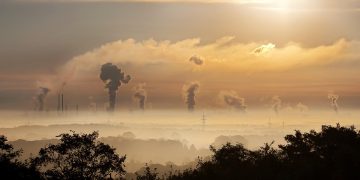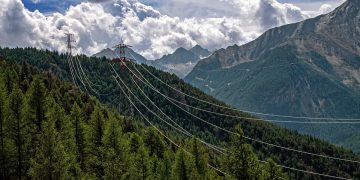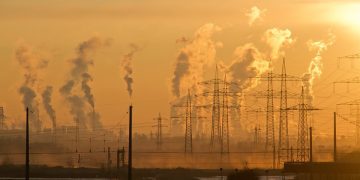Clearing the Path to Destruction: The Devastating Link Between Deforestation and Climate Change
Deforestation is a critical environmental issue that has far-reaching consequences on our planet. It refers to the clearing of forests for agricultural, commercial, or residential purposes, leading to the destruction of natural habitats and the depletion of biodiversity. However, the impact of deforestation goes beyond just the loss of trees – it also plays a significant role in exacerbating climate change.
The Link Between Deforestation and Climate Change
Deforestation contributes to climate change in several ways. One of the most significant ways is through the release of carbon dioxide into the atmosphere. Trees act as carbon sinks, absorbing carbon dioxide from the air and storing it in their biomass. When trees are cut down and burned or left to decompose, this stored carbon is released back into the atmosphere, contributing to the greenhouse effect and global warming.
In addition to releasing carbon dioxide, deforestation also disrupts the water cycle and contributes to changes in local and regional climate patterns. Trees play a crucial role in regulating rainfall and maintaining soil moisture levels. When forests are cleared, the land becomes more susceptible to erosion, floods, and droughts, leading to further environmental degradation.
The Effects of Deforestation on Biodiversity
Deforestation also has a devastating impact on biodiversity. Forests are home to a vast array of plant and animal species, many of which are endemic to specific regions. When forests are cleared, these species lose their habitats and are forced to migrate or face extinction. The loss of biodiversity not only affects ecosystems but also has economic and social consequences, as many communities rely on forests for food, medicine, and other resources.
Addressing the Root Causes of Deforestation
To combat deforestation and its associated impacts on climate change, it is essential to address the root causes of forest loss. One of the main drivers of deforestation is agricultural expansion, particularly for the production of commodities such as palm oil, soy, and beef. By promoting sustainable land-use practices and supporting responsible sourcing, we can reduce the demand for deforestation-linked products and protect our forests.
Another key factor contributing to deforestation is illegal logging and land clearing. By enforcing stricter laws and regulations, increasing surveillance and monitoring, and promoting community-led conservation efforts, we can deter illegal activities and preserve our forests for future generations.
The Role of Reforestation and Afforestation
In addition to addressing the root causes of deforestation, reforestation and afforestation play a crucial role in mitigating the impacts of climate change. Reforestation involves planting trees in areas that have been deforested, while afforestation involves establishing new forests in areas that were previously devoid of trees. These practices not only help to sequester carbon dioxide from the atmosphere but also restore habitats for biodiversity and improve soil health.
Furthermore, reforestation and afforestation can provide economic opportunities for local communities, such as ecotourism, sustainable forestry, and carbon offset projects. By investing in these initiatives, we can create a more sustainable future for both people and the planet.
Conclusion
Deforestation is a pressing environmental issue that has far-reaching consequences on our planet. By understanding the link between deforestation and climate change, we can take steps to address the root causes of forest loss and promote sustainable land-use practices. Through reforestation and afforestation efforts, we can restore habitats, sequester carbon dioxide, and create economic opportunities for local communities. Together, we can work towards a more sustainable future and protect our forests for generations to come.





